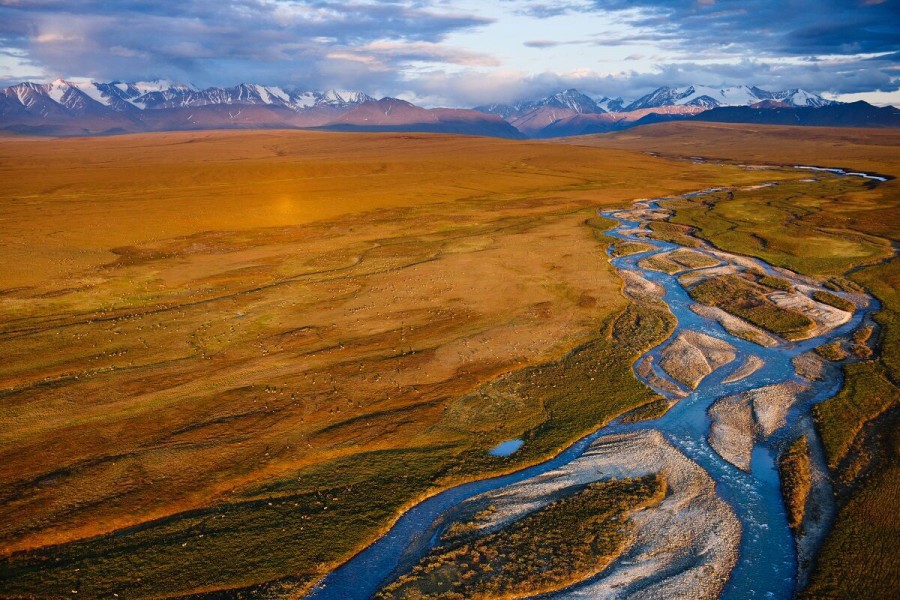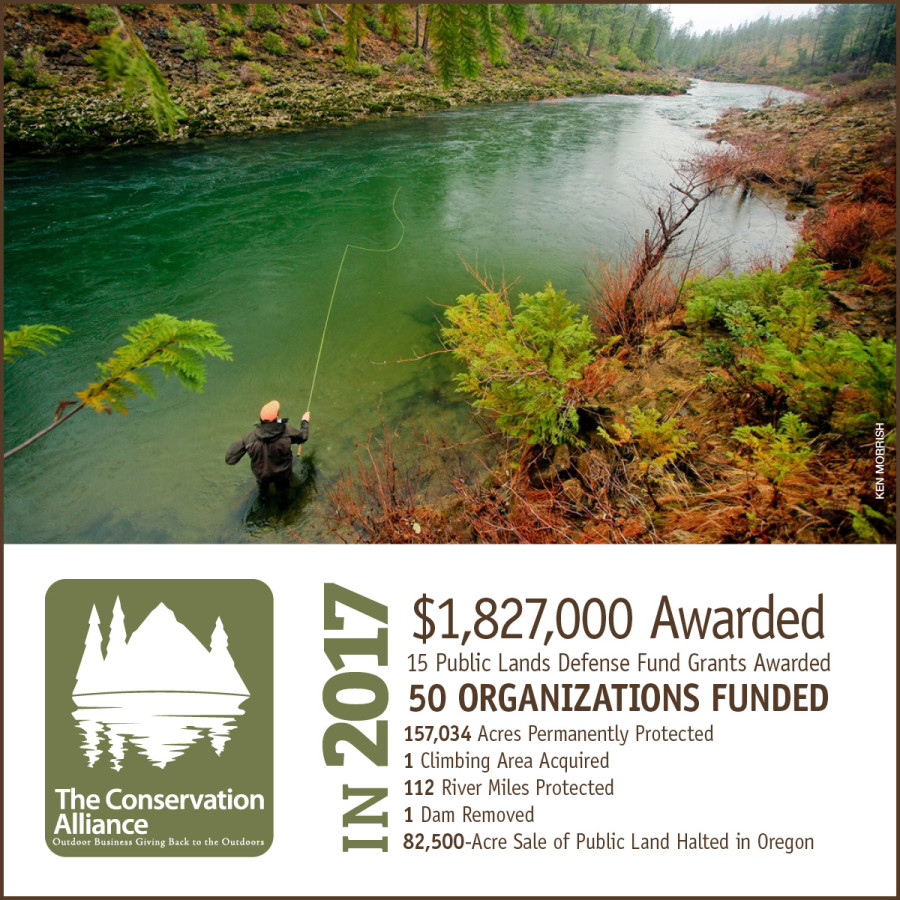Congress today passed tax legislation that includes a provision to open the Coastal Plain of the Arctic National Wildlife Refuge to oil drilling. In a year notable for a steady stream of discouraging news about public lands and our wild places, this one stings. It is an iconic step in the wrong direction for our most iconic landscape. But this battle is far from over.
Pick your superlative. The Arctic Refuge is our wildest landscape. It is our largest refuge. It is the source of sustenance for the Gwich’in people. Its caribou migrate in herds of thousands. Its rivers, flowing north into the Arctic Ocean, offer once-in-a-lifetime adventure. Everything about the place humbles visitors.
Sadly, very few members of Congress who voted to drill in the Arctic have been there. The passion with which leaders of the outdoor industry have advocated for protecting the Arctic Refuge might surprise these members for whom the Arctic drilling provision in the tax bill was irrelevant. Because our members, who know something about adventure, understand that the Arctic Refuge is singularly special.
Roughly half of the 20-million-acre refuge is already protected as Wilderness. But, in 1980, Congress designated the 1.5-million-acre Coastal Plain as a special area that should be studied for its natural resources, and determined that only Congress could open that area to oil drilling. For nearly 40 years, the Coastal Plain has been a prize for conservationists who want to permanently protect it, and for drilling advocates who want to tap its oil reserves.
For more than 20 years, The Conservation Alliance has funded organizations working to secure permanent protection for the Arctic’s Coastal Plain. Our engagement sparked curiosity among industry leaders who had never been to the remote area. Over the past decade, a steady stream of outdoor industry leaders traveled to the refuge to experience the place first-hand. Most were inspired to visit by Zumiez founder Tom Campion, and Eagle Creek founder Steve Barker.
I had the privilege of running the Canning River with several industry leaders – including Tom and Steve – back in 2009. During that trip, my belief that the Arctic Refuge was too special to drill moved from my head to my heart. I recall the midnight sun, the countless ground nests, the wolves crossing the river, the musk oxen huddled in cold fog. Then, on the final morning, a herd of hundreds of caribou migrated through our camp. The Arctic Refuge is nature on its own terms, not ours. And it should stay that way.
After years of asking Congress to designate the Coastal Plain as Wilderness – and subsequent Congressional inaction – our industry urged President Obama to declare the embattled area a national monument. That effort fell short, as Donald Trump took the White House and inherited Republican majorities in both the Senate and House. Which brings us to today.
Congress has approved Arctic drilling with the tax bill. It is telling that oil proponents had to bury the drilling provision in a filibuster-proof tax bill to succeed. Most Americans do not support opening the Arctic Refuge to oil drilling, even if they’ve never seen the place. The mere idea of an untrammeled Arctic National Wildlife Refuge has value. It says that we have the restraint to leave some places alone. That we are not always controlled by our rapacious appetites.
So, until there is an oil well in the Arctic National Wildlife Refuge, this fight is not over. Why?
- Oil exploration and drilling will be subject to environmental review under laws including the National Environmental Policy Act (NEPA) and the Endangered Species Act (ESA). The Arctic is a notoriously sensitive landscape not conducive to industrial development. The Conservation Alliance will seek opportunities to support legal challenges to any Arctic drilling.
- Oil companies that may now seek to drill the Arctic National Wildlife Refuge will have to consider the impact on their reputations and should expect a backlash from shareholders and investors. They will need to evaluate the unfavorable economics and geology that have already led many in the industry to question the expense and viability of Arctic Refuge drilling.
- Millions of Americans oppose Arctic drilling, and are willing to speak out against diminishing our greatest wildlife refuge.
What you can do:
- Contact your members of Congress. Thank those who voted against the tax bill, and let them know that you support any future efforts to legislate protection for the Arctic Refuge. If your Senator or House Representative voted for the tax bill, remind them that they voted to end protections for our greatest national wildlife refuge for no public benefit, and that you will remember their vote.
- Stay engaged! This fight is not over. This Congress and the Trump Administration have launched a systematic assault on our public lands, starting with Interior Secretary Ryan Zinke’s farcical review of national monuments earlier this year. That review led President Trump to remove protections for two million acres of national monument lands in Utah. Now the same players seek to despoil our greatest national wildlife refuge. This is a defining moment for public lands in America, and we all need to engage. We have supported three organizations that work every day to protect the Arctic National Wildlife Refuge, and encourage you to do the same:
- Alaska Wilderness League alaskawild.org
- Audubon Alaska ak.audubon.org
- Earthjustice earthjustice.org




